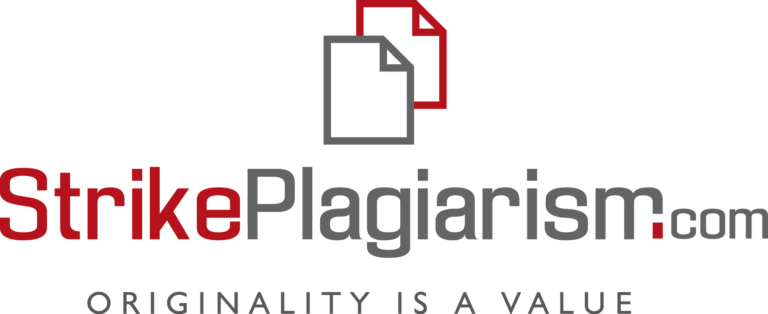ІННОВАЦІЙНІ ІНСТРУМЕНТИ МОДЕЛЮВАННЯ ТА АВТОМАТИЗАЦІЇ БІЗНЕС-ПРОЦЕСІВ В УПРАВЛІННІ ІТ-ПРОЄКТАМИ В КОНТЕКСТІ ЦИФРОВІЗАЦІЇ
DOI:
https://doi.org/10.18524/2413-9998.2025.2(60).341084Ключові слова:
цифровізація, цифрова трансформація, ІТ-проект, управління ІТ-проектами, CASE-інструменти, моделі життєвого циклу програмного забезпечення, моделювання та автоматизація бізнес-процесів, інноваційні інструменти управління проєктамиАнотація
У статті розглядається використання CASE-засобів для моделювання та автоматизації бізнес-процесів з метою підвищення ефективності управління ІТ-проєктами в умовах цифрової епохи. Сучасні ІТ-проєкти стикаються з безпрецедентними викликами, зумовленими стрімким розвитком цифрових технологій. Традиційні підходи та інструменти управління вже не відповідають динаміці змін ринку, що вимагає застосування нових засобів для аналізу, моделювання та автоматизації бізнес-процесів на всіх етапах життєвого циклу програмного забезпечення. Обґрунтовується доцільність і ефективність впровадження CASE-засобів в практику управління ІТ-проєктами. Автори аналізують можливості поєднання цих інструментів з класичними методами управління проєктами для досягнення кращих результатів і адаптації до нових умов, продиктованих цифровою трансформацією. Розглядаються ключові етапи цифровізації, еволюція моделей життєвого циклу програмного забезпечення, актуальні проблеми, що виникають в управлінні ІТ-проєктами, а також особливості сучасних CASE-засобів, їх функціонал та потенціал інтеграції у процеси управління проєктами. На основі аналізу практичних кейсів продемонстровано приклади ефективного використання CASE-засобів у процесах збору та аналізу вимог, проєктування, тестування та супроводу програмного забезпечення. Метою дослідження є надання ІТ-менеджерам нових підходів та інструментів для вирішення актуальних викликів і підвищення ефективності бізнес-процесів в управлінні ІТ-проєктами в умовах цифровізації.
Посилання
Project Management Institute. (2017). A guide to the Project Management Body of Knowledge (PMBOK® Guide) (6th ed.). Project Management Institute.
Ohara, S. (2005). P2M: A guidebook of project & program management for enterprise innovation (Rev. 3). Project Management Association of Japan.
Kooi-Akrofy, G. Y. (2017). IT project management in project delivery: Key processes, activities, roles and responsibilities. Texila International Journal of Management, 3(2). https://doi.org/10.21522/TIJMG.2015.03.01.Art023
Koi-Akrofi, G. Y., Koi-Akrofi, J., & Matey, H. A. (2019). Understanding the characteristics, benefits and challenges of agile IT project management: A literature-based perspective. International Journal of Software Engineering & Applications, 10(5). https://doi.org/10.5121/ijsea.2019.10502
Nerur, S., Mahapatra, R., & Mangalaraj, G. (2005). Challenges of transition to agile methodologies. Communications of the ACM, 48(5), 72–78.
Marinho, M., Sampaio, S., Lima, T., & Moura, H. (2014). A systematic review of uncertainties in software project management. International Journal of Software Engineering & Applications, 5(6). https://doi.org/10.5121/ijsea.2014.5601
Yordanova, Z. (2024). Digital transformation of project management. Future of Information and Communication Conference. https://doi.org/10.1007/978-3-031-54053-0_19
Sima, V., Gheorghe, I. G., Subi, J., & Nancu, D. (2020). Influences of the Industry 4.0 revolution on human capital development and consumer behavior: A systematic review. Sustainability, 12(10), 4035.
Yashkina, O., Chaikovska, M., & Filatova, V. (2020). Artificial intelligence in mobile marketing: Conditions, obstacles and prospects of using. Marketing and Digital Technologies, 4(2), 53–60. http://doi.org/10.15276/mdt.4.2.2020.5
Population of global offline continues steady decline to 2.6 billion people in 2023. (2023). International Telecommunication Union. https://www.itu.int/en/mediacentre/Pages/PR-2023-09-12-universal-and-meaningful-connectivity-by-2030.aspx
Hoehe, M. R., & Thibaut, F. (2020). Going digital: How technology use may influence human brains and behavior. Dialogues in Clinical Neuroscience, 22(2). https://doi.org/10.31887/DCNS.2020.22.2/mhoehe
National Bureau of Statistics. (2024). https://data.stats.gov.cn/english/adv.htm?m=advquery&cn=C01
Schwalbe, K. (2018). Information technology project management (9th ed.). Cengage Learning.
Smith, J. (2012). Information technology’s influence on productivity [Master’s thesis, University of Nebraska Omaha]. ProQuest. https://digitalcommons.unomaha.edu/studentwork/13
Talebi, H., & Khatibi Bardsiri, A. (2023). The impact of information technology on service quality, satisfaction, and customer relationship management (Case study: IT organization individuals). Journal of Management Science & Engineering Research, 6(2), 24–31. https://doi.org/10.30564/jmser.v6i2.5823
Mbaidin, H. O. (2021). The impact of e-government success factors on citizen satisfaction: The context of UAE. Journal of Hunan University (Natural Sciences), 48(12), 8–19. https://www.jonuns.com/index.php/journal/article/view/886
Chaikovska, M. (2024). Marketing aspects of the implementation of Green IT for innovation sustainable development of societal systems. Science, Education, Culture, (1), 24–30.
Chaikovska, M. (2021). Kontseptualni ta metodolohichni pidkhody do upravlinnia marketynhovymy IT-proiektamy v konteksti tsyfrovoi transformatsii [Conceptual and methodological approaches to managing marketing IT projects in the context of digital transformation. Oldi-Plius. [in Ukrainian].
Bai, J., & Li, Z. (2012). Research on online course development model based on optimized waterfall model. China Audio-Visual Education, (5), 94–98. [in Chinese].
Rapid prototyping model, incremental, spiral model. (2024). CSDN Blog. https://blog.csdn.net/qq_36502272/article/details/121155075
What is Agile Methodology? (2024). Geeks for Geeks. https://www.geeksforgeeks.org/what-is-agile-methodology/?ref=lbp
The spiral model: An overview. (2024). Baeldung. https://www.baeldung.com/cs/spiral-software-development-model
Brandon, D. M. (2006). Project management for modern information systems. IRM Press.
Levitskaia, A., & Chaikovska, M. (2020). Suchasni pidkhody do upravlinnia mobilnymy marketynhovymy IT-proiektamy [Modern approaches to managing mobile marketing IT projects. Marketing and Digital Technologies, 4(1), 88–97. http://doi.org/10.15276/mdt.4.1.2020.7 [in Ukrainian].
Yu, B. (2024). Problems and features of IT-project management in modern conditions. Zbirnyk tez 80-I zvitnoi konferentsii ONU imeni I. I. Mechnikova [Collection of abstracts of the 80th reporting conference of ONU] (pp. 325–328). Oldi-Plius.
Pressman, R. S. (2010). Software engineering: A practitioner’s approach (7th ed.). McGraw Hill Higher Education.
Mariana N. (2024). Identify, prevent, and mitigate potential digital project risks. Medium. https://mariana-n.medium.com/identify-prevent-and-mitigate-potential-digital-project-risks-f4c8dba834d5
Computer Aided Software Engineering (CASE). (2024). Geeks for Geeks. https://www.geeksforgeeks.org/computer-aided-software-engineering-case/
##submission.downloads##
Опубліковано
Як цитувати
Номер
Розділ
Ліцензія

Ця робота ліцензується відповідно до Creative Commons Attribution-NonCommercial 4.0 International License.
Автори залишають за собою право на авторство своєї роботи та передають журналу право першої публікації цієї роботи на умовах ліцензії Attribution-NonCommercial 4.0 International (CC BY-NC 4.0).
Автори мають право укладати самостійні додаткові угоди щодо неексклюзивного розповсюдження роботи у тому вигляді, в якому вона була опублікована цим журналом (наприклад, розміщувати роботу в електронному сховищі установи або публікувати у складі монографії), за умови збереження посилання на першу публікацію роботи у цьому журналі.
Політика журналу дозволяє і заохочує розміщення авторами в мережі Інтернет (наприклад, у сховищах установ або на особистих веб-сайтах) роботи, оскільки це сприяє виникненню продуктивної наукової дискусії та позитивно позначається на оперативності та динаміці цитування опублікованої роботи (див. The Effect of Open Access).


